|
27th May
Ardmore Point
With
the east coast plagued by
haar (fog) I decided to return to a favourite western location, Ardmore
Point in Dumbartonshire. So after our customary brekkies in Dumbarton
Morrisons (10/10 wow!) we drove out of Dumbarton on the Helensburgh
road, through Cardross and soon we could see the Ardmore peninsula
jutting out into the Firth of Clyde. We parked at the very end of the
Ardmore Road, with a fine view of the bay to the south, although when
we arrived the tide was high and apart from a man on a horse there was
not much to see on the water. I managed the first shot of the day as I
took the camera out of the boot - a fine Peacock butterfly.The horseman
followed us round the path for a bit before I caught a wee Blue Tit
feeding on a shoreside tree. Below the tree I spotted a patch of Green
Alkanet,Pentaglottis sempervirens, with it's small piercing blue
flowers. Also piercing were the bristles of it's stems and leaves!
Peacock Butterfly
|
Ardmore Point
|
Blue Tit
|
Green Alkanet
|
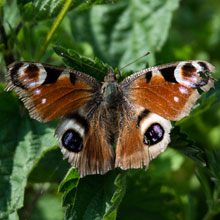
|
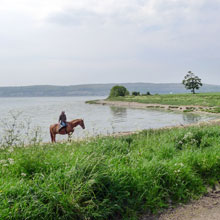
|
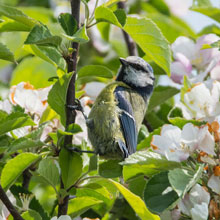
|
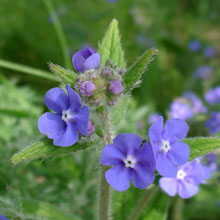
|
Further round the path we started
getting views west down the Firth and south to Port Glasgow and
Greenock. We came upon lonely Whimbrel looking a bit forlorn as it
stood on the water’s edge. We had earlier seen a distant large flock
taking off and flying south. At the time we had thought they were
Curlews, but they may have been Whimbrel and they may have left one of
their number behind. Whimbrel and Curlews both have down-curved beaks,
but Whimbrel’s beaks are shorter and more curved. They also have
prominent brown head stripes. A small group of Eider sat on the rocks
seemingly unconcerned by my presence. Further on we were disappointed
with the lack of bird sightings but eventually things warmed up after a
couple of Gulls started things off again. A 2nd cycle Herring Gull
floated past us just as a mature, mean looking Herring Gull flew past
carrying in its beak what looked like a Crab.
Whimbrel
|
Eider
|
2nd Cycle Herring Gull
|
Herring Gull
|
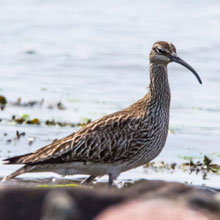
|
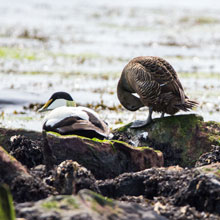
|
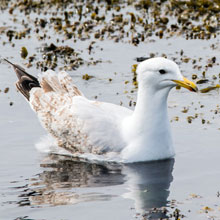
|
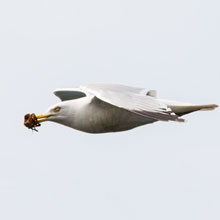
|
We were also passed by a Common
Tern. We watched it rounding the Point to join several other Terns.
Excited at the prospect of Tern flight shots we upped the pace to get
nearer them. On the way we collected nice shots of Thrift, Gorse and a
dog cooling off in the water. I also got an interesting capture of 18
tiny (~5mm) moths gorging themselves on Buttercup pollen. These were
Micropteric Calthella, Marsh Marigold moths.
Thrift
|
Dog
|
Gorse
|
Marsh Marigold Moth
|
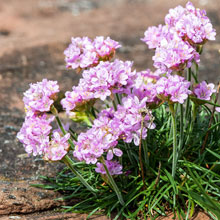
|
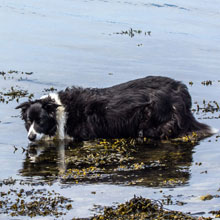
|
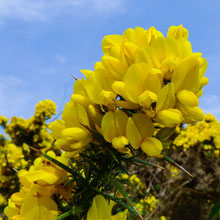
|
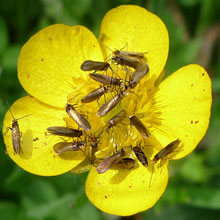
|
We next passed onto the rocky
shore, the air rich with the scent of the Wild Roses that lined the
rough path. I noticed an area of rock with a few points of interest.
Clinging to the rock, a small clump of English Stonecrop was ready to
bloom. John pointed out a purple and ochre, almond-shaped beetle, later
identified as Ctenicera cuprea, a click beetle. It showed us its wings
(see Pictures of the Week, below) and eventually it flew off. Plodding
out of the area, still eager to get in some Tern action, I paused to
capture an image of Sea Plantain. In some parts of the world its seeds
and leaves are eaten, raw or cooked.
Wild Rose
|
English Stonecrop
|
Click Beetle - Ctenicera cuprea |
Sea Plantain
|
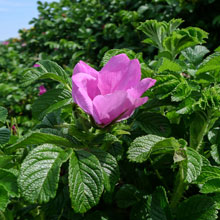
|
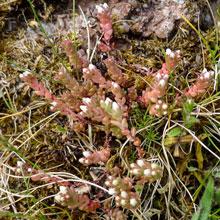
|
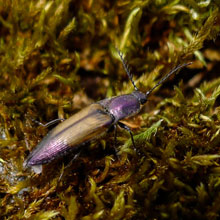
|
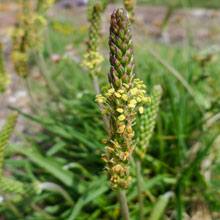
|
Pausing further I found Common
Lousewort in the grasses above the shore. I also snapped Cottongrass
which are like mini-candflosses. Delaying matters even further I came
across the small, quite delicate looking blue flower, Common Milkwort.
This flower was thought by the ancient Greeks to stimulate milk in
lactating mothers.At last we arrived at the North bay where the Common
Terns were active. Over a half-hour period I took quite a few shots,
some from as close as 10m as the birds circulated the bay many times
over in their search for fish.
Common Lousewort
|
Cottongrass
|
Common Milkwort
|
Common Tern
|
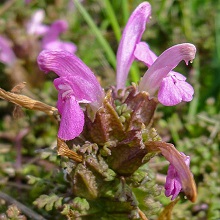
|
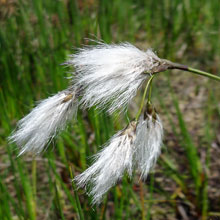
|
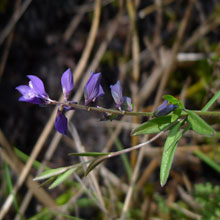
|
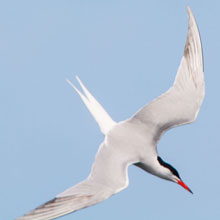
|
Occasionally one would emerge from
a dive with a fish in its beak, sometimes harassed by lazy,
Black-headed gulls that were trying to rob them. We also heard the
rasping calls of Sandwich Terns but they didn’t come within camera
range. Further out in the Bay a pair of Red-breasted Mergansers sat
rather inactive. Eventually the Terns dispersed and we moved on fairly
satisfied with our collection of photos. We moved along the more shaded
north side of the Ardmore peninsula. I did though managed some well-lit
shots of two of my favourites flowers, Red Campion and Silverweed. The
latter is used in some herbal treatments, particularly for sore throats
and, as a lotion for bleeding piles!
Common Tern
|
Red - breasted Merganser
|
Red Campion
|
Silverweed
|
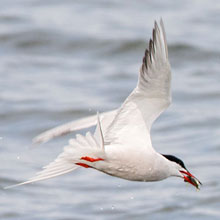
|
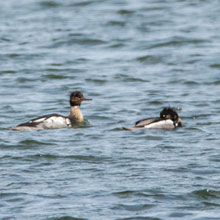
|
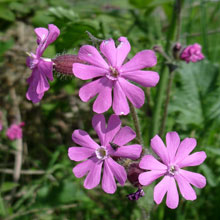
|
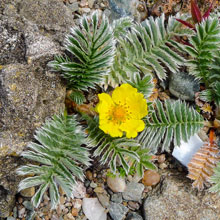
|
We noticed the tide was going out again and that there were at least a dozen
Grey Herons standing throughout its very shallow waters (see Pictures of the
Week, below). During the time we watched them they didn’t catch much but they
may have been waiting on the tide receding further. On the last leg to the car
I took shots of some more common but beautiful wildflowers, Forget-me-not and
Greater Stitchwort. My final capture was of a back lit Green-veined White
butterfly as it fed on a Campion flower. It is probably a female as its veins
are heavily marked.
Back at the car we relaxed in the
ever warming sunshine with tea and mini chocolate eclairs. Another
mission completed satisfactorily.
Pictures of the Week:
Whimbrel
|
Common Tern
|
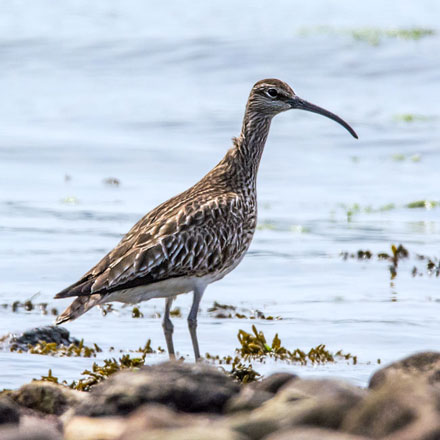
|
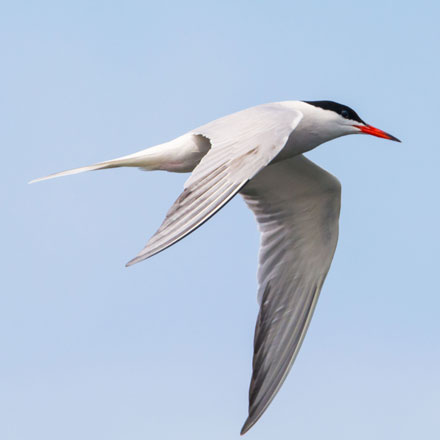
|
| Click Beetle - Ctenicera cuprea |
Green - veined White Butterfly
|
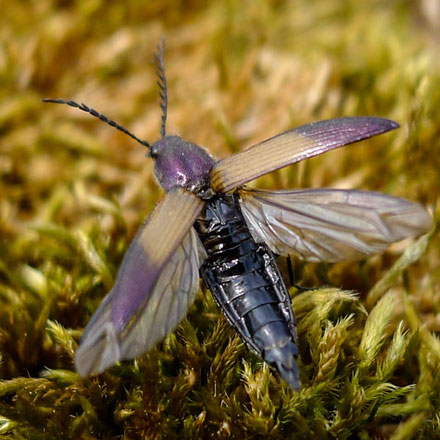
|
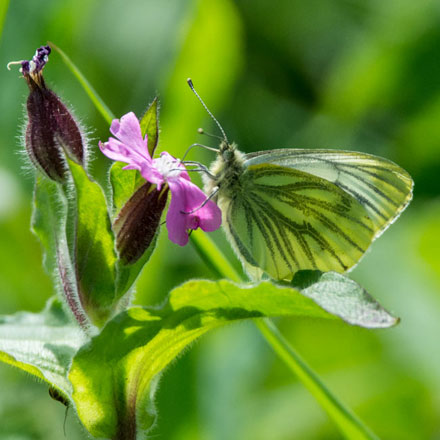
|
20th May 2018
Aberlady
After a week of wonderful, sunny
weather, wasn’t it just our luck, as we set off for our usual Sunday
adventure, to find the skies overcast and threatening rain. The
weatherman lead us to believe the best of the weather was to have been
in the east of the country, so we decided on Aberlady LNR. As we tucked into our Dalkeith
Morrisons’ breakfasts (9/10, point dropped due to leaky teapots), the
sky was all grey and getting greyer. However we pressed on regardless. After securing the last space in the
wee car park at the Aberlady reserve, we crossed the wooden bridge and
were immediately met with a flurry of Meadow Pipits enjoying the full
excitement of the breeding season. A big Wood Pigeon ruffled a few of
its feathers but otherwise it reacted as if it had seen it all before.
We reached a part of the site we call “butterfly alley” as it has
provided us with many species in previous visits. However I think the
cool, dim, grey conditions were keeping the butterflies away. We
satisfied ourselves with some nice shots of a couple of wildflowers.
The first was Cowslips, whose name, rather unflatteringly, derives from
the old English for “cow dung”, around which they are often found.
Rather more romantically, the other flower we saw, Cuckoo Flowers are
so-named because they appear around the time as Cuckoos start to sing.
Meadow Pipit
|
Wood Pigeon
|
Cowslip
|
Cuckoo Flower
|
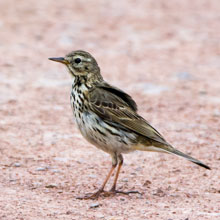
|
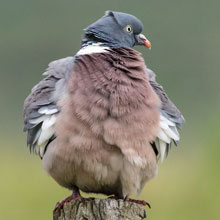
|
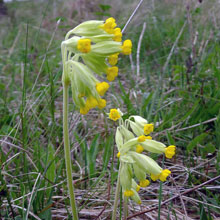
|
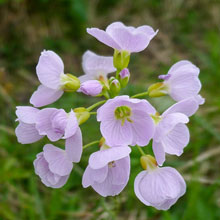
|
Eventually we passed along a long
dark passage through a huge Buckthorn copse. At it's start I was taking
pictures of patches of the fascinatingly beautiful Springbeauty when a
very small (~1cm) caterpillar seemed to hover before my eyes. In fact
it was suspended by an almost invisible gossamer thread. We have yet to
identify the caterpillar. Further along the passage some Welsh Poppy
flowers were in bloom. I also snapped a St Mark’s Fly at rest on blades
of grass.
Spring Beauty
|
Caterpillar T.B.C.
|
Welsh Poppy
|
St Mark's Fly
|
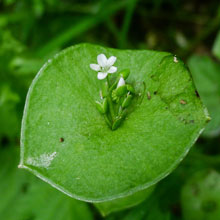
|
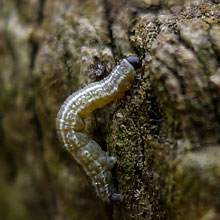
|
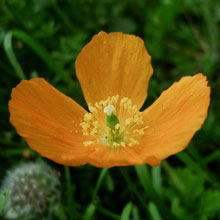
|
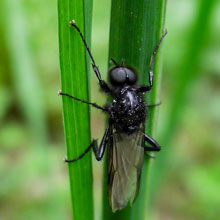
|
We emerged from the end of the
Buckthorn passage to the mellifluous tones of a Willow Warbler perched
high on the bushes. Not far on we came to the Marl Loch - just in time
to catch the rain! Along the front of the Loch I spotted a large,
beautiful, but unfamiliar aquatic plant with starry, white flowers.
It’s common name is Bogbean, which hardly does it justice. it is
so-named as it’s leaves resemble those of the Broad bean. We moved on
away from the Loch and on the path in front of us we came upon a
crouching Skylark. I thought it might be a female waiting for the
services of the male that had been serenading her as it hovered
overhead. The male descended to a few feet from the female and the pair
swiftly relocated to the fields spooked by walkers. As we reached the
water works I spied Purple Milk Vetch blooming in the short grass.
Willow Warbler
|
Bogbean
|
Skylark
|
Purple Milk Vetch
|
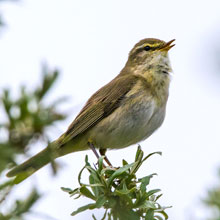
|
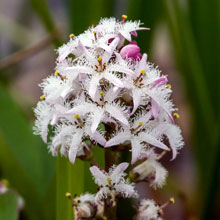
|
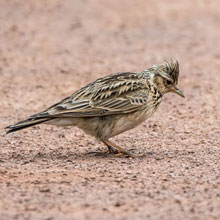
|
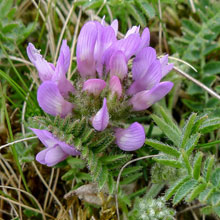
|
We reached the golf course and as
I stopped to photograph another Meadow Pipit I noticed a few Roe Deer
grazing in the distance. It was still raining so visibility was poor,
but I could make out that two of the group had antlers, so were Roe
bucks. We then met a pair of walkers who joyfully advised us that they
had recently seen a pair of Cuckoos on the path to Gullane Point. We
immediately changed our course and set about scanning for Cuckoos. As
we climbed the gradual slope towards the Point a female Shelduck passed
overhead making for the mouth of the Peffer Burn. My attention was next
drawn to a solitary, scarlet-breasted male Linnet sitting on top of
asmall bush. I managed s quick shot before it sped off.
Meadow Pipit
|
Buck Roe Deer
|
Shelduck
|
Male Linnet
|
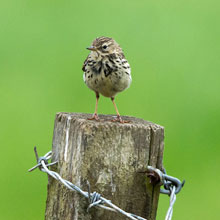
|
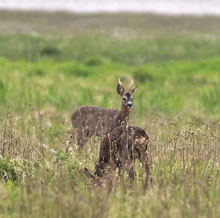
|
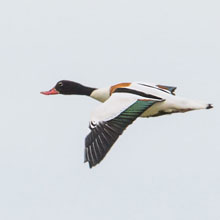
|
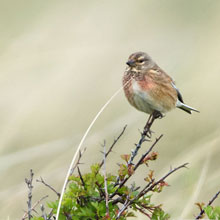
|
The path then descended through
Buckthorn thickets towards the sea. A very inquisitive Chaffinch posed
obligingly before us. We thought that that was the point in the path
where the walkers had seen the Cuckoos, so we paused there for 5
minutes, but we didn’t catch sight nor sound of them. As I waited, I
captured some pictures of the flora - Birds-foot Trefoil (its leaf of
3-leaflets resemble a bird’s foot!), Barren Strawberry (its flowers
don’t bear fruit) and Common Vetch (a very pretty member of the Pea
family).
Chaffinch
|
Common Bird's - foot Trefoil
|
Barren Strawberry
|
Common Vetch
|
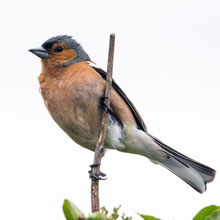
|
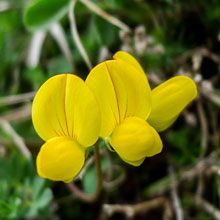
|
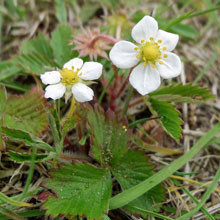
|
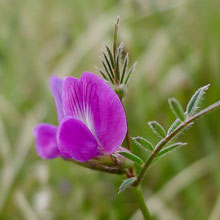
|
At the Point we were greeted by an
impressive, if somewhat dull panorama of the Forth Estuary.
Pink-coloured Thrift dotted the cliff edges. Sometimes called “Sea
Pink”, it was, rather ironically, depicted on the face on the old
threepenny bit. We carefully climbed down the rocky path onto the sands
of Aberlady Bay and plodded our, by then, weary way back to the car.
Along that mile long stretch all we saw was a distant pair of
Oystercatchers. Eventually we reached the point where we had to clamber
over the dunes. I always think of football manager Jock Wallace,
imagining him cajoling me militaristically over the steep, sandy
slopes, as he had done when he trained his football teams there some
decades before. Back on level ground I was attracted by a male
Stonechat calling from its fence post. We neared Marl Loch once more
and found a pair of Greylags, curiously, nibbling at the red gravel
path.
Thrift
|
Oystercatcher
|
Stonechat
|
Greylag Goose
|
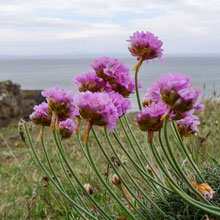
|
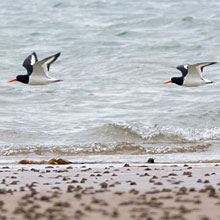
|
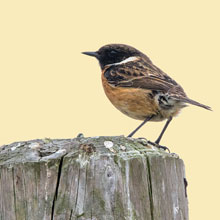
|
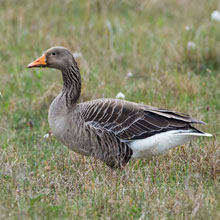
|
Tipped off by a fellow birder, I
had been looking out for Hairy Violets, but all we could see were the
more common Dog Violet. At the Loch I spotted another gorgeous aquatic
plant, the Marsh Marigold. Also called Kingcup as it resembles the cups
of ancient kings, it has apparently been around since at least the end
of the last Ice Age. We neared the wooden footbridge with the teasing
call of a male Reed Bunting in our ears. From the Bridge I took my
final shots, of a Black-headed Gull picking out long worms from the
silt.
Dog Violet
|
Marsh Marigold
|
Male Reed Bunting
|
Black - headed Gull
|
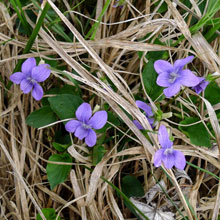
|
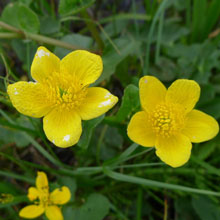
|
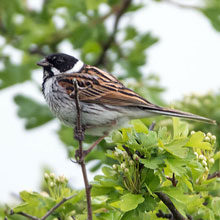
|
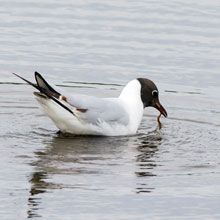
|
The weather was occasionally very
much against us but we managed to capture a fair variety of specimens,
flora and fauna. We overrun our schedule by nearly an hour but, of
course, we’d still time for a rewarding tea and Apple and Custard
Danish Lattice.
Update: At JMCP last week we had a
fruitless search for the Yellow Figwort. Undeterred, midweek, I ventured forth
into the edges of trees to the south of the lighthouse at Barns Ness, East of
Dunbar, and at last located the elusive plants (See below).
Pictures of the Week
Caterpillar
|
Bogbean
|
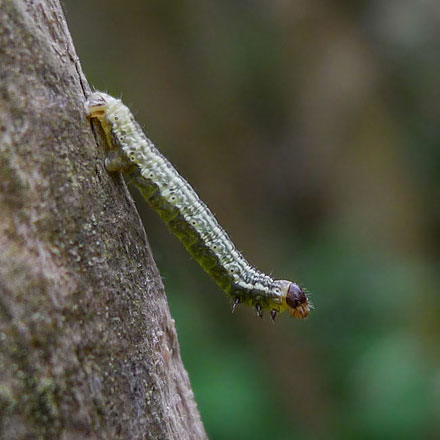
|
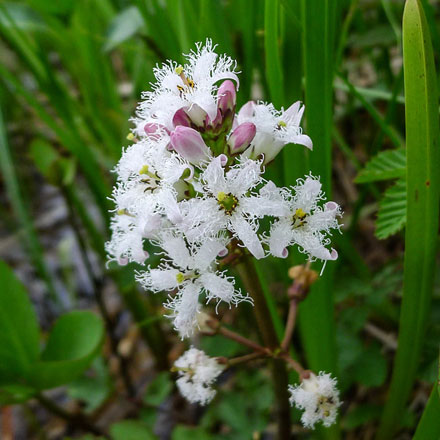
|
Greylag Goose
|
Yellow Figwort
|
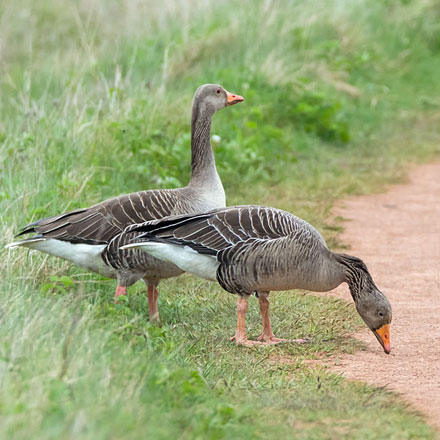
|
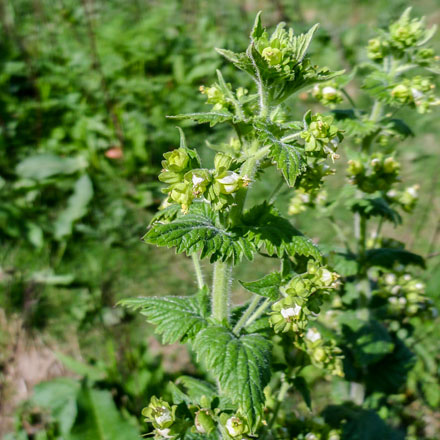
|
13th May 2018
Stevenston Point, Saltcoats and Troon Harbour
It was gorgeous weather at last in
Ayrshire. As we tucked into a rather good Stevenston Morrison’s
breakfasts (had to be 10/10), we anticipated seeing Gannets and maybe,
for the first time this year, Sandwich Terns. When we arrived at the Point,
several Gannets were already at work impressively piercing the waves
with their exciting dives, though on most occasions they seemed not to
catch any fish. We witnessed a fly-past of four Black-tailed Godwits
just as a Shag surfaced, and then a pair of Sandwich Terns swept past.
Our expectations were fulfilled in the first 5 minutes.
Gannet
|
Black - tailed Godwit
|
Shag
|
Sandwich Tern
|
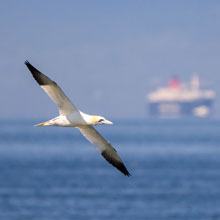
|
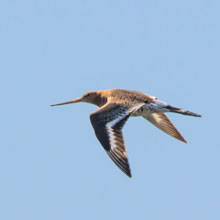
|
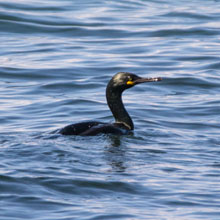
|
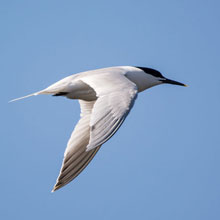
|
A
somehow annoying motorised hang
glider appeared above us and hung about a bit too long. Even a 1st
Cycle Common Gull seemed irritated. The low buzz of flapping swan
wings alerted us to a passing juvenile Mute Swan. Maybe it too had been
startled by the hang glider. John spotted a small Razorbill quite a bit
offshore, too far though for a decent shot.
Air Jockey
|
1st Cycle Common Gull
|
Juvenile Mute Swan
|
Razorbill
|
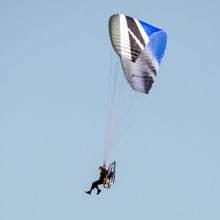
|
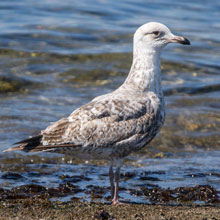
|
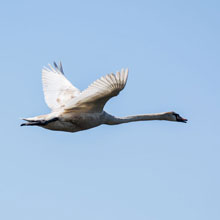
|
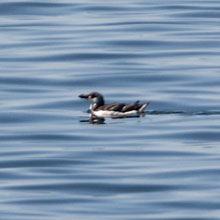
|
A small, swerving flock of Ringed
Plovers and Dunlin arrived at the rocky tip of the Point, that, until
then, had been devoid of birds. The usual Cormorants were not to be
seen until one arrived and landed in the sea and then proceeded to try
to dry its wings while sitting on the surface. I then spotted a Small
Tortoiseshell butterfly on a nearby Dandelion. John then directed me to
the bobbing head of a Common Seal. It seemed to be checking us out.
Also keeping an eye on us was a very handsome Herring Gull (see
Pictures of the Week, below), although it wasn’t tracking our movements
through wariness, but probably to see if we had any chips!
Ringed Plover
|
Cormorant
|
Small Tortoiseshell Butterfly
|
Common Seal
|
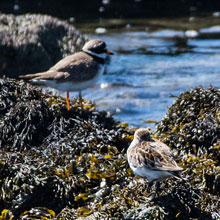
|
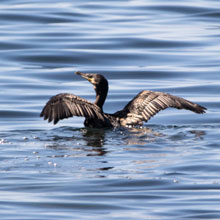
|
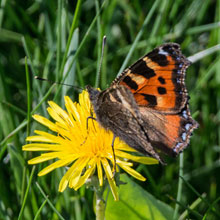
|
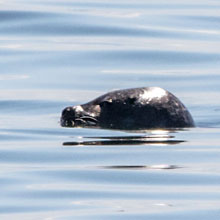
|
After a while the Point began to
fill up with cars. No doubt their drivers were encouraged out by the
lovely weather - and why not! We like it quiet though, so we relocated
to Saltcoats Harbour. There we caught the tail end of a squabble
between two Rock Pipits, and I caught one in attack mode - tail up
wings pointed down. At the end of the Harbour I managed flight shots of
Gannets, Shag and Eider. The light was on the wrong side of the birds
but the pictures look ok I think.
Rock Pipit
|
Gannet
|
Shag
|
Eider
|
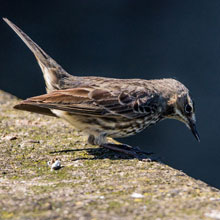
|
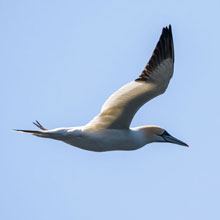
|
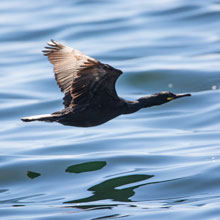
|
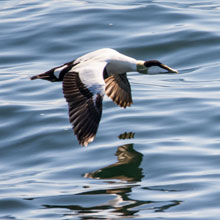
|
After the slightly disappointing
spell at the Harbour we decided to move on, not to our usual Irvine
Harbour, but to Troon Harbour. The main reason for this was that the
Council Roads Department were getting in some Sunday shifts, leading to
the effective blockading of the routes around the town. However Troon
was a bit of a disappointment too - with just more Eider and Gannets.
But as we were about to stop for tea, a Whimbrel flew in from the
direction of the Ferry terminal. It was slightly smaller than a Curlew,
with a shorter, more curved beak and dark brown head stripes. Our last
capture was my favourite, a Green-veined White butterfly. John is now
calling me the “Butterfly Whisperer” as for the second week running I
managed to encourage the butterfly onto my finger (see Pictures of the
Week, below).
Juvenile Eider
|
Gannet
|
Whimbrel
|
Green - veined White Butterfly
|
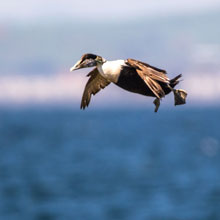
|
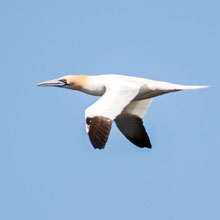
|
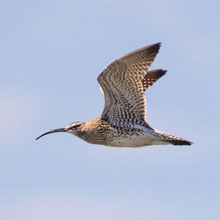
|
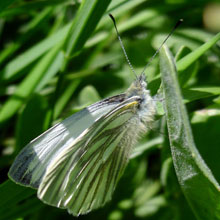
|
It had been a quiet visit but an
enjoyable one. It was just a privilege to be on the Ayrshire coast that
was set in azure blue skies and sea, with Arran to the west and Ailsa
Craig to the south.A wonderful setting to have tea and, no, not Danish,
but French Palmiers - Palm Tree pastries! Délicieux!!
Pictures of the Week:
Herring Gull
|
Rock Pipit
|
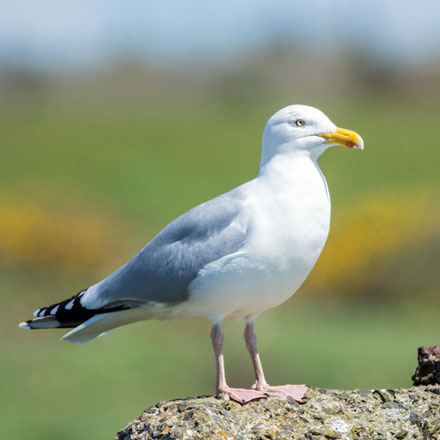
|
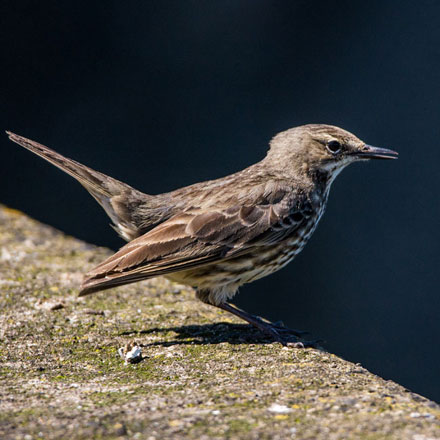
|
Eider
|
Green - veined White Butterfly
|
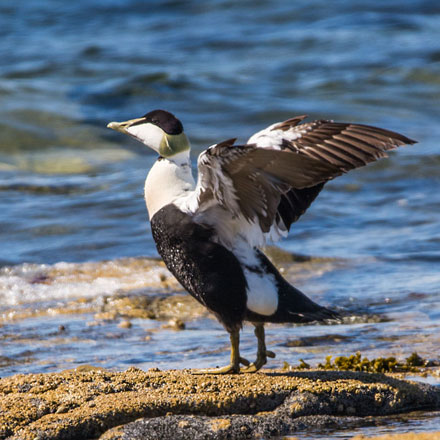
|
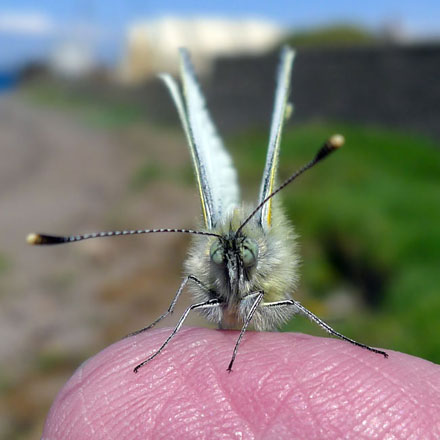
|
6th May 2018
John Muir Country Park (JMCP)
There’s a distinct floral theme to
this week’s blog with only a few birds making an appearance. The reason
for this is that we drove to the JMCP seeking a first sighting of a
plant, the Yellow Figwort, guided by a social media friend who advised
us of its presence there. However, let me say straight away, we didn’t
see it - which was a disappointment. But let me also say, we did manage
a fair number of sightings of other freshly blooming wildflowers, not
to mention a South American flightless bird!
The weather was fine as we tucked
into breakfast at Dalkeith Morrisons (9.5/10, the half mark off hard to
justify). At the Park, the heat from the sun encouraged us to take off
our jackets - a very rare occurrence! As we set off on a circuit of the
wooded plantation at the heart of the Estate I came across Goldfinches
and Chaffinches that were very active at an area by a burn. Near there
at the edges of the well-trodden sandy path we nearly missed some
little white Field Mouse-ear flowers as they looked like Common Daisies
from a distance. Also present there were a few Dog Violets.
Chaffinch
|
Goldfinch
|
Field Mouse - ear
|
Dog Violet
|
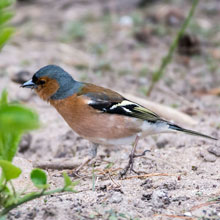
|
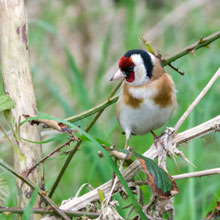
|
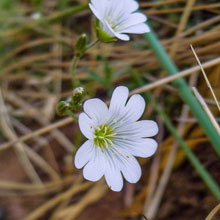
|
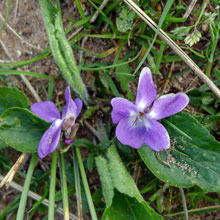
|
We walked on and found a point
where we could view the salt marsh that leads to the Tyne Estuary. From
our raised vantage point we could see two pairs of birds, female
Wheatears and Skylarks, moving on the mainly dry salt marsh. I decided
to descend the slope onto the plane, knowing full well that the birds
would see me coming and would fly off. I hoped I’d get some descent
shots before they went up. Being kind to myself, I’ll just call them
“record” shots. As we continued on our circuit I noticed some pretty
specimens of Ground Ivy. This plant has been used in traditional
medicine in Europe for thousands of years to treat inflammation of the
eyes, tinnitus, bronchitis as well as being a diuretic, astringent,
tonic and gentle stimulant. It has even been used in brewing beer. As I
pondered these facts, a female Orange Tip butterfly winged its way past
and onto some grass stalks. I was able to encourage the beautiful
specimen onto my warm finger for closer inspection (see Pictures of the
Week).
Female Wheatear
|
Skylark
|
Ground Ivy
|
Female Orange Tip Butterfly
|
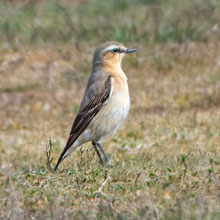
|
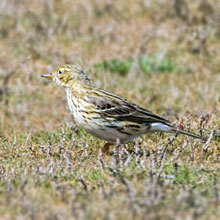
|
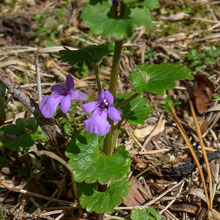
|
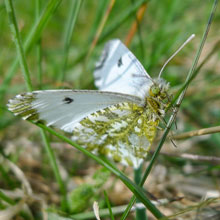
|
About half way round we rested
momentarily overlooking exposed sands of the Estuary at low tide. A
couple of hundred metres out we saw a pair of Shelduck. Again I
ventured forth across the damp sands to grab a couple of reasonable
shots while John sat by the trees, observing. ( Actually, I was
avoiding a long walk episode.) On my return John was bemoaning the fact
he had had an encounter with a damp dog. We pressed on regardless and
came upon a clearing in the woods peppered with seeding Coltsfoot, so
named as its leaf is similar in shape to the foot of a young horse.
Unusually the leaves, though, don’t grow until the flowers disappear. A
small black Marchfly, Bibio Lanigerus, conveniently took up position on
a seed head.
Estuary at low tide
|
Shelduck
|
Coltsfoot
|
Fly - Bibio lanigerus
|
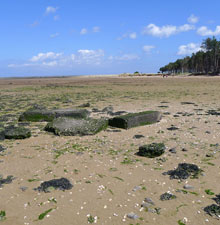
|
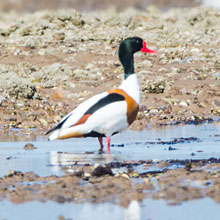
|
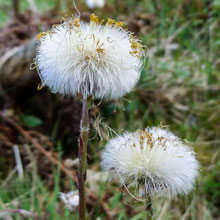
|
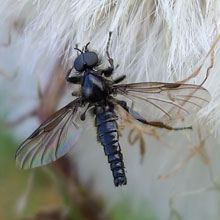
|
We walked south to the picturesque
point where we walked back eastwards along the sunlit south side of the
woods (see Pictures of the Week). As I was photographing some Red
Campion I heard the unmistakable tones of a singing Yellowhammer and
soon located it atop a nearby conifer. Its song is known by some as “a
little bit of bread with no cheese” thus: “chi chi chi chi chi cheese”.
Next we spotted large patches of a North American immigrant plant,
Spring Beauty (also known as Miner’s Lettuce) with small white flowers
sprouting from the centre of a much larger leaf, that is actually a
fused pair of leaves.As we pressed on, a male Orange Tip butterfly
caught my attention and I snapped it sitting on a Dandelion seed head.
Red Campion
|
Yellowhammer
|
Spring Beauty
|
Male Orange Tip Butterfly
|
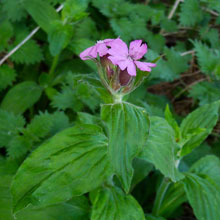
|
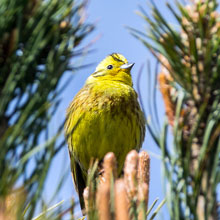
|
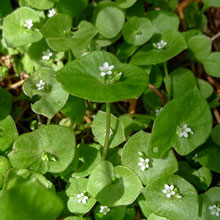
|
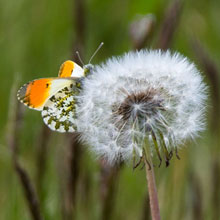
|
Eventually
we reached the boundary fence of the Fun Park, where we encountered
another butterfly that crossed our path on more than one occasion,
namely the Peacock. The one shown below looked rather tattered. It
landed on a Dandelion in the middle of an freshly built bank rich in a
variety of wildflowers, including two species of Deadnettle, White and
Red, whose young leaves are edible in salads or as cooked vegetables.
At this point we were visited at the other side of the fence by a Rhea,
a flightless bird native to South America. Their numbers there are
diminishing due to loss of habitat, although it is not listed as
endangered.
Peacock Butterfly
|
White Deadnettle
|
Red Deadnettle
|
Rhea
|
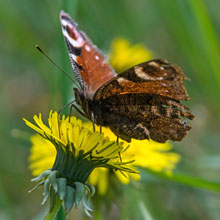
|
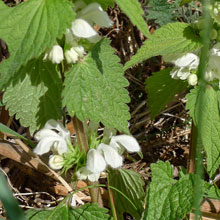
|
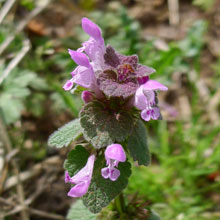
|
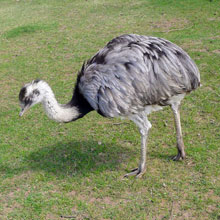
|
As the
Rhea looked on, I recorded more wildflowers I found at the bank. Some
pretty, small blue-coloured Germander Speedwell contrasted with the
taller, drab, weedy Common Groundsel and the tiny, insignificant white
flowers of Chickweed. Foraging through blades of grass a 7-spot
Ladybird hunted small invertebrates, such as Aphids.
Germander Speedwell
|
Common Groundsel
|
Common Chickweed
|
7 Spot Ladybird
|
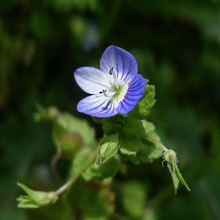
|
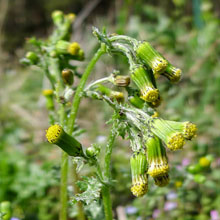
|
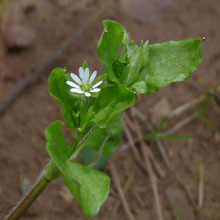
|
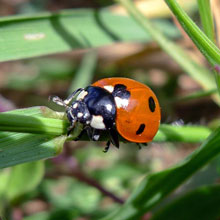
|
Below the fence I found a
small but very handsome, yellow Field Pansy and beside it an even
smaller, but no less good-looking, dark pink Dove’s Foot Cranesbill.
After that bonanza of wildflowers we completed our journey back to the
car and, on the way, got pictures of newly emerging Garlic Mustard and
in their final throes, Bluebells.
Field Pansy
|
Dove's - foot Cranesbill
|
Garlic Mustard
|
Common Bluebell
|
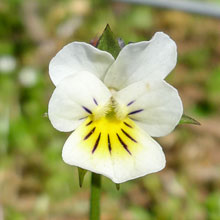
|
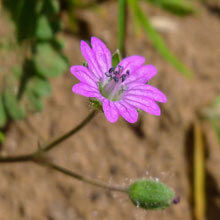
|
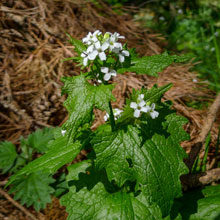
|
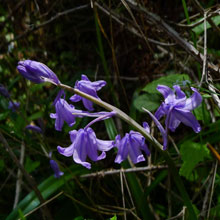
|
We decided
to have our tea and tit-bits at Belhaven Bay. Before that though we had
a 10 minute stroll along the sea wall path to see what we could see. As
the tide was still very low, we didn’t see a lot, only a Great Tit with
its “teecha teecha” call and a very close Grey Heron fishing in a burn
at the other side of the sea wall. My final captures of the day were of
Ribwort Plantain and some young Hoary Cress.
Great Tit
|
Grey Heron
|
Ribwort Plantain
|
Hoary Cress
|
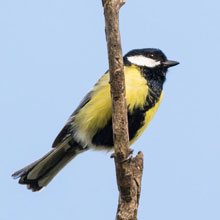
|
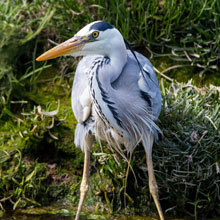
|
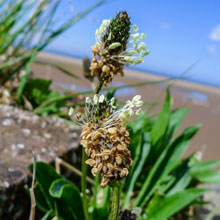
|
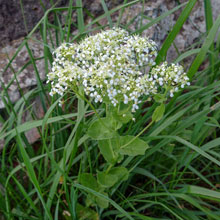
|
We may not have seen the Yellow Figwort (maybe next week) but we had seen
and photographed quite a few other interesting subjects. So we enjoyed our tea
and cream and jam doughnuts - very naughty!
Never mind, the wives needn’t know.
My wife did. I still had some sugar on my top lip. Yep, she's that good. John P.
Pictures of the Week
Female Orange Tip Butterfly
|
Spring Beauty
|
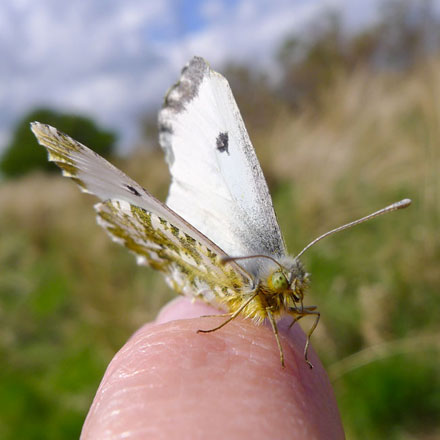
|
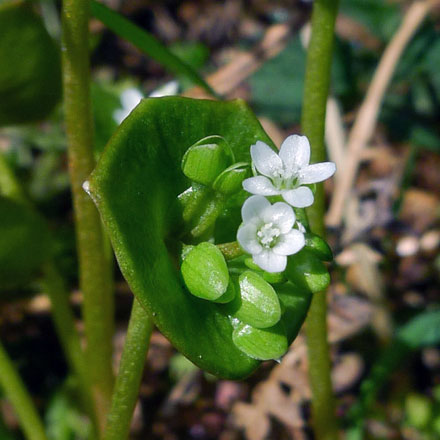
|
Tyninghame Bay Estuary
|
Yellowhammer
|
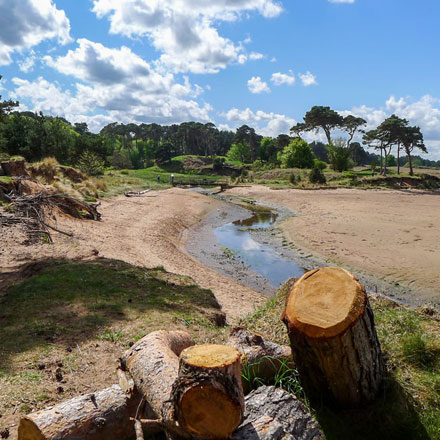
|
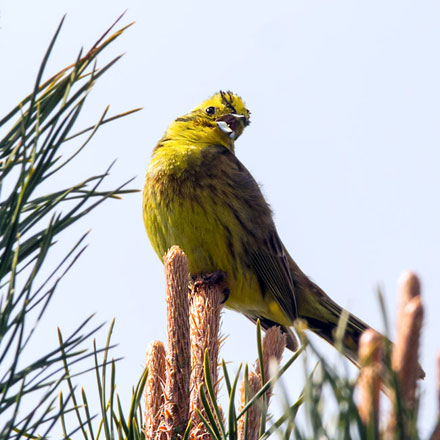
|
Back To Top
|

